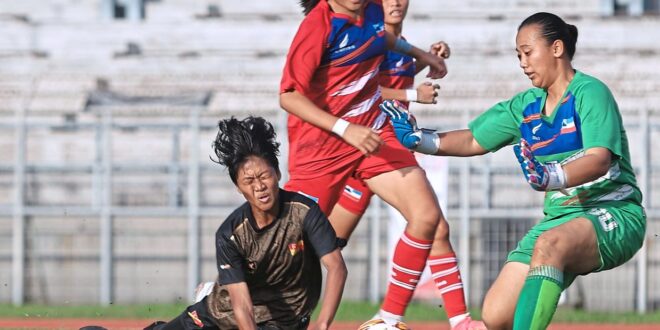AS THE whole world’s focus was on the recently concluded 2024 Paris Olympics, it’s high time we looked at our own sports backyard.
Having served as a sports teacher in both primary and secondary schools for the past 36 years, I have observed that about 60% of schoolchildren have keen interest in football and netball while the remainder are involved in badminton, athletics, sepak takraw, martial arts, volleyball, handball, tennis, rugby, softball and squash.
The national sports associations, in collaboration with the Malaysian Schools Sports Council (MSSM), have drawn up a year-long calendar of tournaments to cater for several age groups at district, state and national levels.
Despite more than two million schoolboys and girls playing football, Malaysia’s national team has had difficulty in beating Asean minnows such as Singapore, the Philippines, Myanmar and Laos in international matches.
Football Association of Malaysia (FAM) and MSSM should sit together to rethink their strategies, selection criteria and allocation of funding so as to assist junior development and coaching programmes.
I am confident that both these umbrella bodies are capable of producing teams of Asian standard, if they can efficiently channel the millions of ringgit from sponsors to truly deserving teams who are producing results.
Looking at the system in the schools, the sports teachers and their athletes are neglected.
Most of the time the headmasters in primary schools and principals in secondary schools tend to direct their co-curricular senior assistants and sports secretaries to start training their athletes only two weeks to four weeks before a sports tournament or championship.
These school heads, who mostly do not come from sports background, probably consider sports meets as not contributing to the academic excellence of their students.
As a result, sports teachers are usually overlooked for promotions and excellence service awards.
Furthermore, the school heads prevent their teachers from being officials in the meets at district, state and national levels which are organised with the permission and funding of Education Ministry.
Recently, I went to a district meet where even Form 6 students and teachers’ college trainees were appointed as officials.
Despite this, there are sports teachers who still soldier on for the sake of their pupils and make sure their charges have the proper nutrition during competition, as well as get jobs when they leave school.
In addition, most of the Physical and Health Education (PHE) teachers take the easy way out by not guiding the inexperienced sports teachers who sometimes do not know head or tail about the rules or training methods of sports like football, badminton and athletics.
If we want to produce world-class athletes, I suggest former world No.1’s such as Datuk Nicol Ann David and Datuk Lee Chong Wei go to the primary schools near their homes to impart their knowledge at least once a week.
The Federal Government has spent and invested millions of ringgit to train them until they became world beaters since 1998. They can give back to society by helping these schoolchildren.
We also have to make it compulsory for every sportsman or woman who have donned our national colours at Asian Games, Commonwealth Games and World Championships to guide the sports teachers near their respective homes.
For example, the late Peter van Huizen and his brother Lawrence tirelessly coached hockey for their alma mater St Paul’s Institution (SPI) as well as Negri Sembilan men and national women’s teams from the 1960s to 1990s.
Scores of SPI boys played in the World Championships and Olympiads under their guidance and made Malaysia proud.
These brothers emphasised that hearing our national anthem played on foreign soil as the Malaysian flag was raised was most satisfying, and they retired to live simple lives.
I suggest we organise more age group meets between Malaysia and Singapore, namely Under-12, Under-15, Under-18 and Under-21, to keep the keen rivalry alive and produce an endless supply of back-up players for our national teams.
Finally, I hope that Malaysia will become a sports giant that not only churns out millions of players, but also produces teams worthy of winning accolades for our country at the international arena, so as to recapture the golden era of Malaysian sports from the 1950s to 1980s.
MICHAEL CHENG
Seremban
 BeritaKini.biz Berita Viral Terkini di Malaysia
BeritaKini.biz Berita Viral Terkini di Malaysia





